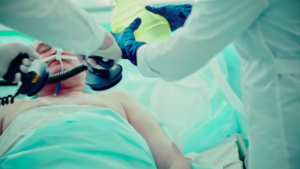With the permission of the Association for the Advancement of Medical Instrumentation (AAMI), the Physician-Patient Alliance for Health & Safety (PPAHS) is pleased to release the AAMI video on how to keep patients and their families safe, “Only Continuous Electronic Monitoring Can Ensure Patients Receiving Opioids Are Safe.”

The video can be viewed on the PPAHS YouTube Channel, by clicking here.
The video describes why only continuous electronic monitoring can ensure patients receiving opioids are safe:
“Surprisingly thousands of people die each year from opioid related respiratory depression and cardiac arrest. It is even more shocking to learn that this isn’t limited to the recreational opioid epidemic in America. These deaths are happening to patients inside the halls of our very own hospital wards. Opioids can be very helpful for pain management, and in some cases an incredibly important component to a hospital patients comfort and recovery. But, the side effects of opioids can vary dramatically among individuals and can fluctuate from minor to life threatening.”
In discussing the current standard of care, Marilyn Neder Flack (Executive Director at Association, AAMI) and Senior Vice President, Patient Safety Initiatives, AAMI Foundation) believes that all patients receiving opioids should be continuously electronically monitored:
“Currently, the standard of care in this country is that a healthcare professional will go into a patient’s room about every four hours- some hospitals do a little more often than that- but, regardless, after the healthcare professional checks the patient’s vital signs, they may be OK at that point in time. As soon as the health care professional leaves the room, patients no longer being watched and they can slip away. They can start to deteriorate, they can move into respiratory depression, they can move into brain death or actual death. Only through the use of continuous electronic monitoring can you ensure that the patient is safe 100% of the time.”
Frank Overdyk, MSEE, MD, explains why it is so difficult to predict how a particular patient will react when administered an opioid:
“So, opioids are powerful pain medications and they can slow your breathing, but they can also stop your breathing. And, it’s only takes a few minutes after you stop breathing that your oxygen levels fall to a low level where you can have a cardiac arrest or you could have a brain injury. The danger of opioids is that patients respond differently to a given dose of opioid and that variability between patient is really quite large, so we can’t really predict how patients going to respond- some patients who’ve never seen opioids may be very sensitive, some patients may be on chronic opioids, they may more resistance- but there’s no good model that predicts how that patients will respond and whether they will suffer critical respiratory depression.”
In the video, Laura Batz Townsend describes the tragic loss of her mother, who was left unmonitored after successfully undergoing knee surgery. Says Ms. Townsend:
“I would encourage all patients [receiving opioids] after surgery to be continuously monitored during their stay.”
To read her story, please click here.

In 2014, AAMI established the National Coalition to Promote Continuous Monitoring of Patients on Opioids “to establish the business case—demonstrating strong financial justification and improved patient outcomes—to educate and encourage hospitals to adopt continuous monitoring for all patients on parenteral opioids.” AAMI produced the video as part of its ongoing commitment to achieving this goal.
For more on the National Coalition to Promote Continuous Monitoring of Patients on Opioids and PPAHS involvement, please click here.
As set forth in the Position Statement on Continuous Monitoring, PPAHS believes that all patients receiving opioids in hospital should be continuously electronically monitored.